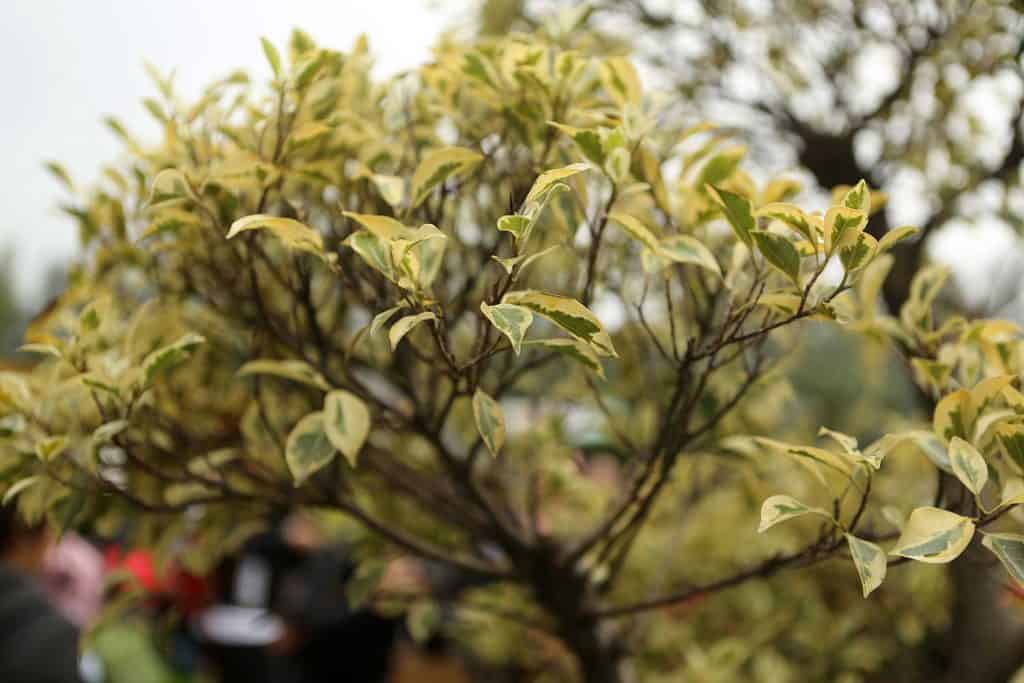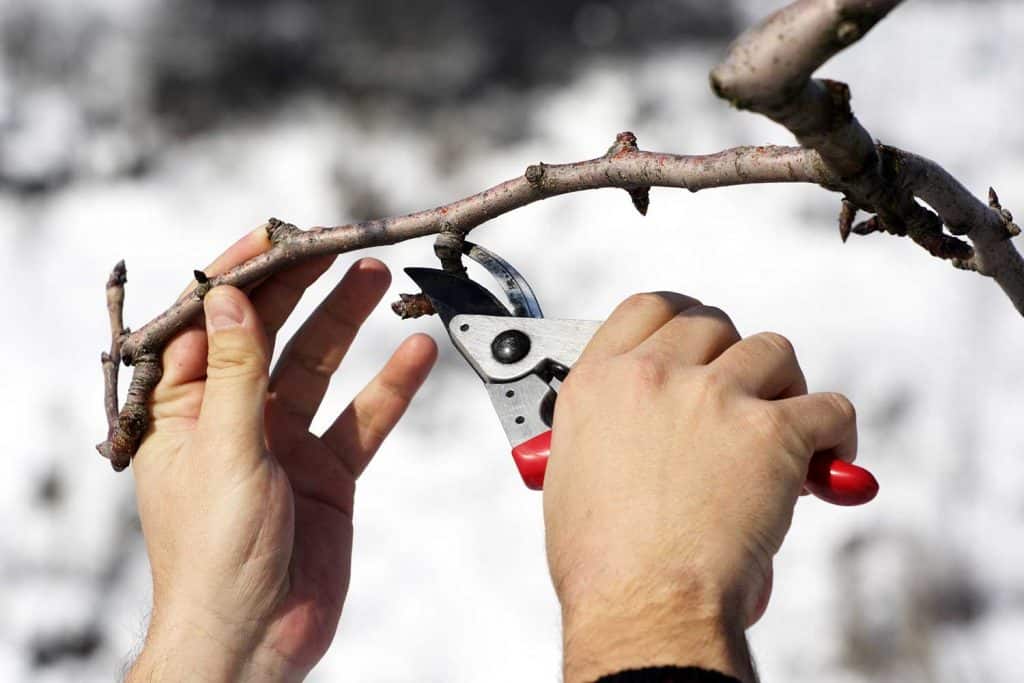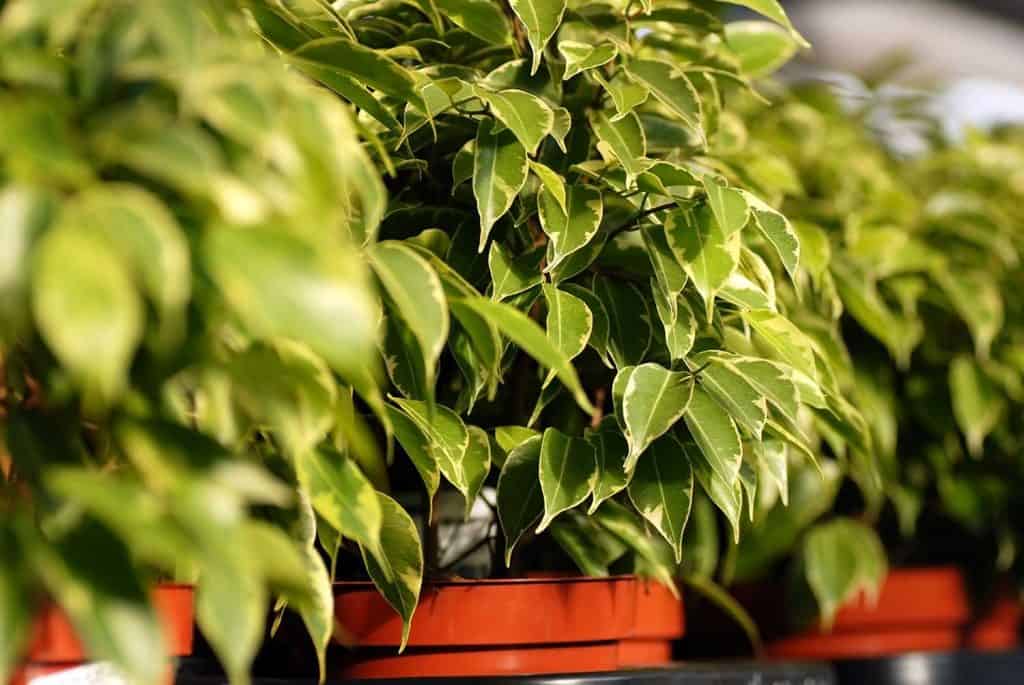Figuring out what is wrong with your plants can feel tricky at times. Have you noticed your weeping fig tree start to lose leaves, or is the damage much worse? What could possibly cause these issues? We've done the work to bring you the answer.
There are a few main reasons your weeping fig tree is dying. Some of the leading causes include a lack of water, inadequate sunlight, overwatering, poor soil quality, and disease. If you begin to notice the leaves drop off your tree or even its limbs start to crack or deteriorate, all hope is not lost. We recommend new soil, relocation, fertilizer, pruning, or simply a pesticide spray to save your fig tree.
As we begin, we will discuss how to save a dying weeping fig tree and what signs to look out for. Whether you have an idea of the cause of death or not, there are ways to help revive your dying tree. With that said, let's explore this topic!

What Causes A Weeping Fig To Die?
Typically, a weeping fig tree (Ficus Benjamina) will die due to environmental issues. Whether it be a lack of water or even unhealthy soil, weeping figs will begin to show signs of death well before they are unsavable. One of the most common signs your ficus is dying is when its leaves either all "drop" or begin to yellow.
Of course, in the fall and winter, this is very normal to happen, but during other months this is not normal. If you start to see your tree become barren, make sure to look at its soil and feel around its base.

How Do You Save A Dying Ficus Tree?
When it comes to reviving a dying ficus tree, fast action is necessary. Once you begin to see your tree get sick, make sure to either assess it yourself or call a specialist. From what we found, you can still save a weeping fig after 95 percent of its leaves have fallen, so you do have some time. The first thing to check on your dying tree is its soil and moisture levels. If the two of those seem fine, make sure to look for leaf spotting or signs of disease on your fig's branches.
What Do You Do When A Ficus Loses All Its Leaves?
Like we mentioned above, a weeping fig can still recover even if 95 percent of its leaves have fallen. If your tree is completely bare, this is when it becomes much more difficult to save your ficus plant. Usually, you should be able to bring back a weeping fig during its dying period, but solemnly once it has entirely lost all of its leaves. We suggest removing your dead tree once all leaves have fallen to prevent other plants around it from catching any diseases it might have had.
Is Weeping Fig A Hardy Tree?
Typically, weeping fig trees are relatively hardy options to plant either inside or outside your home. Most times, outdoor weeping figs become susceptible to pests, drought, and other natural elements much easier than indoor plants. If your tree is outdoors, make sure to regularly spray it with a natural pesticide and check its leaves often. As we said, there are endless reasons your tree will begin to die, so fast action is essential.
Trifecta Crop Control Super Concentrate All-in-One Natural Pesticide
Here is an all-in-one natural pesticide from Trifecta to try on a dying fig tree. This high-power product promises to defeat pests, mold, mildew, and disease and is non-toxic.
Check this pesticide out on Amazon here.
Should I Prune A Dying Ficus Tree?

When it comes to pruning a dying ficus tree, we recommend it. In general, try to prune your ficus each winter after the growing season has come to an end. If your weeping fig starts to die during spring or a non-winter season, make sure to be careful when pruning and not take off too much foliage. Less is more when it comes to pruning ficus plants and is a great way to turn your tree's health back in the right direction.
How To Prune A Dying Ficus Tree
Typically, you should only prune your dying ficus tree once you have figured out its cause of death. After you address your tree's main concerns, that is a good time for minor emergency pruning. To start, grab a sharp pair of garden shears for your weeping figs' branches and mark what areas need the most help.
Once you do that, cut back your figs branches about one-quarter to one-third of their length. You want to make sure not to overdo it with the pruning while also promoting new growth on your ficus.
KSEIBI Lightweight Tree Pruning Shears
Here is a tree pruning pair of shears from KSEIBI to try on your ficus. These shears have a tight grip handle, cut into two inches, and have a steel blade.
Follow this link to see these on Amazon.
How Much Water Does A Weeping Fig Need?
Water-wise, weeping fig trees prefer a moderate amount. With that said, a leading cause of death in weeping fig trees is either over or underwatering, so make sure to feel the soil before you water your plant. Generally, you should water a ficus tree every other day during the spring/summer months and then cut back in the fall and winter. Another thing to keep an eye on is the soil around your fig tree, which needs to drain water well.
Do Ficus Trees Need Good Drainage?
Like we mentioned above, yes, your ficus tree needs to have good draining soil. Regardless of where your tree is planted, the soil around it must drain water well and be rich in nutrients. Weeping figs do best when they constantly have moist soil during their growing season and then moderate levels for the rest of the year. We recommend a water tester for your soil, so you never have to worry about over or underwatering your tree.
Longruner Moisture And Acidity Plant Tester
Here we have an indoor and outdoor moisture and acidity level tester from Longruner. This two-pack of soil testing devices does not need batteries and includes an easy-to-read color-coded system.
View these soil testers on Amazon here.
How Long Do Ficus Trees Live?

Typically, you can expect a ficus tree to live anywhere from ten to 20 years. Although these trees do not live a very long time, they are pretty easy to take care of and are great foliage for any garden. If your weeping fig is older and begins to die, that might be a good explanation for why it is happening. Every plant has a unique lifespan, but don't expect a ficus tree to stay alive much longer than 20 years.
How Fast Does A Weeping Fig Grow?
Weeping figs are fast-growing tropical and subtropical trees that usually reach 25 feet within ten years. Although ficus tree height varies depending on the species, your fig should grow about two feet per year until it fully matures at around ten years old. With this type of tree only living about 20 years, we suggest using fertilizer regularly to speed up the growing process.
Miracle-Gro Shake 'N Feed Flowering Trees Slow Release Plant Food
Here is a slow-release plant food from Miracle-Gro to use on your ficus trees. This fertilizer weighs eight pounds, has natural ingredients, and feeds plants for three months between uses.
See this plant food on Amazon here.
The Wrap Up
Whether you have a dying weeping fig tree or are starting to notice its health decreasing, there are ways to save it. Issues related to your tree's soil, water, sun exposure, and pests are the leading causes of its death. Generally, we recommend assessing your tree by looking at its leaves and feeling near its base.
If you notice an extreme amount of dropping leaves or deteriorating branches, act quickly. Regardless of where you live or where you plant your ficus tree, make sure to check it regularly and prune it yearly.
Still with us? Check out these helpful related posts!
How Big Does A Weeping Fig Grow?




